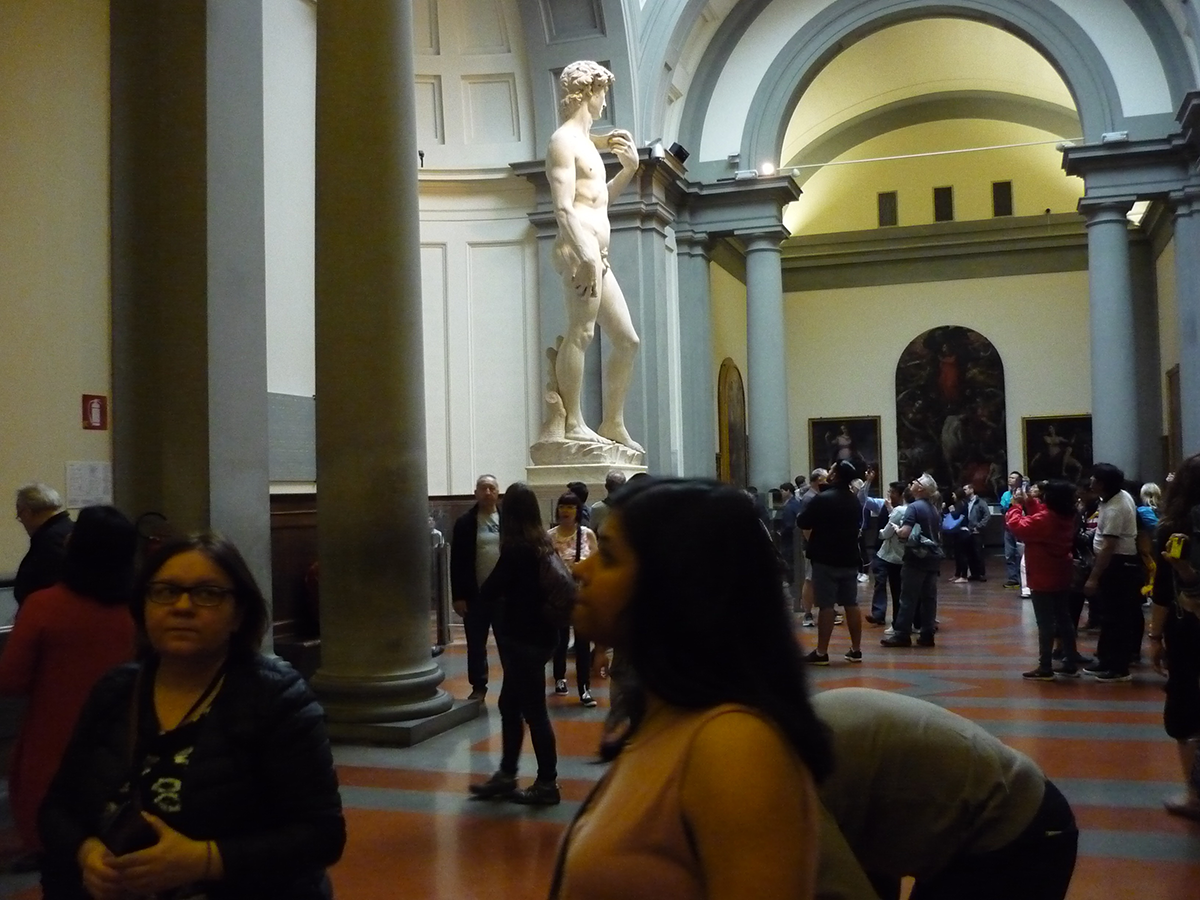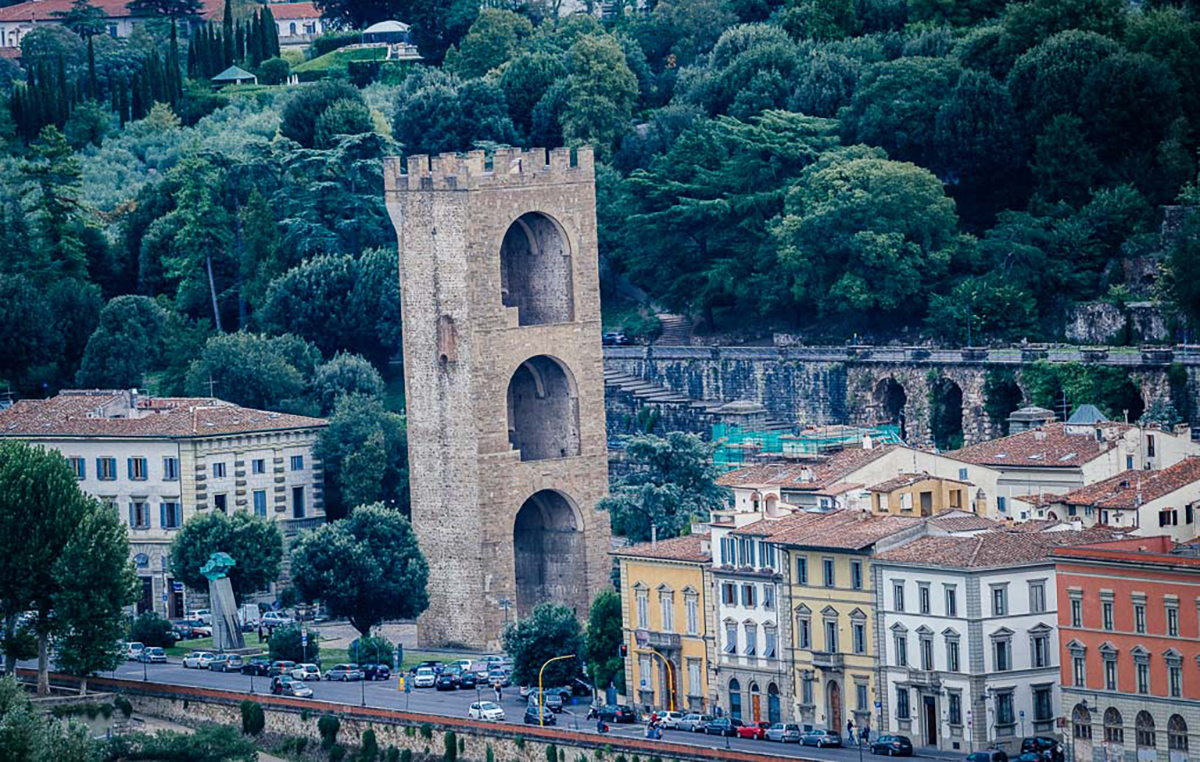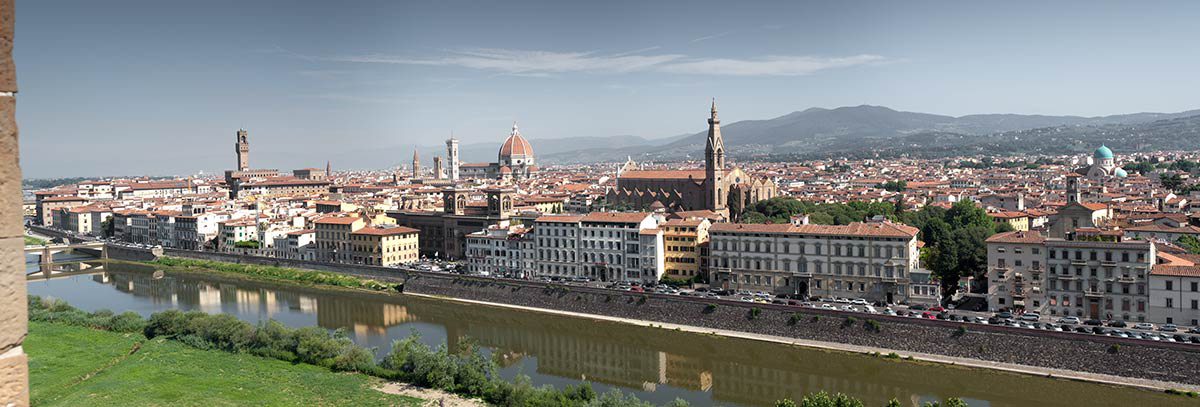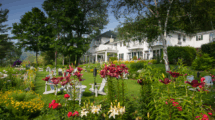
Travel
By Jamie Portman
A city drenched in antiquity
Dante, the greatest of Italian poets, was baptized a few feet from where I’m standing. That was in 1265. Then, a couple of centuries later, came various christenings of members of the Medici family — both the famous and the infamous.
Long-ago events? Not really — not when it comes to the Baptistery of St. John, which is shrouded in an even more distant past.
It stands, in all its octagonal glory, in the Piazza Sal Giovanni in the heart of Florence. Because it seems so timeless, there’s no better way of beginning an
acquaintanceship with the drama of Florence than to come here first.
Construction of this exquisite religious site began in 1059, but in truth, its origins are buried in the dust of antiquity. As we explore this hushed and ancient building, so enduring in its mystery, we can easily believe that a Roman Temple dedicated to Mars once stood here. After all, the evidence is before our eyes in the presence of those imposing interior columns salvaged from the rubble of ancient Roman buildings.
This is a place drenched in antiquity. We want to linger here in the presence of the stunning ceiling mosaics that compete for our attention with a majestic overhead painting of The Last Judgment. And when we need to relieve the crack in our necks from staring upward for too long, there is much more to admire at ground level, beginning with the geometric splendours of the flooring that craftsmen began laying in 1209.
This ancient building is a good starting point for the visitor to Florence because even when crowded it remains a place of peace and tranquillity. Furthermore, be assured that are many such
attractions in this lovely city — galleries, museums and churches that prove to be surprising oases of calm in a city that is one of the world’s most popular tourist attractions.
There’s no calm, of course, when you exit the Baptistery and encounter the multitudes that swarm the piazza day and night. We’re back in the 21st century. Cell phones and digital cameras are in abundance. There are long line-ups to get into the Duomo — alias the 14th century Cattedrale di Santa Maria del Fiore — as well as a separate queue to enter its most famous feature, Filippo Brunelleschi’s enormous Dome where a climb to the top will afford breathtaking views. Around the corner, there’s another line-up for those hardy souls anxious to enter Giotto’s 14th century Bell Tower and ascend 414 steps to the top.
The contrast between the old and the new is constantly present. Leave the Baptistery and you find it surrounded by swarms of visitors, cameras competing to catch images of sculptor Lorenzo Ghiberti’s stunning bronze-panelled doors. Michelangelo called them the Gates of Paradise. Yet, these are mere copies — superb copies admittedly — with the originals now consigned to a safer space. Florence is a city that takes care of its history.
Tourism has become an essential economic resource — not only here but in surrounding Tuscany. But, as the so-called cradle of the Renaissance and as the custodian of some of the most enduring artistic masterpieces of all time, this lovely city’s responsibilities are awesome. To a first-time visitor, the vast crowds surrounding the Duomo can seem intimidating — a symptom of unfettered tourism running rampant and threatening to spoil it for all. Yet only minutes away, you can find venerable side streets that speak more of the past, than the present.

It was on one such peaceful lane, a short distance from the pulsating life of the Piazza Sal Giovanni that I came to the 14th century building that housed my hotel, a charming boutique establishment located on the third floor.
I had walked there from the railway station, my suitcase rolling behind me. One of the glories of Florence is that it’s a wonderful walking city, with virtually all of its priceless attractions within easy proximity. Moreover, simply pottering about can prove to be an ongoing journey of exploration and discovery in itself.
There are unexpected delights in making a random turn onto a side street and discovering an oldfashioned carousel revolving in the shadow of ancient buildings. There’s the excitement of stumbling onto a pleasant outdoor cafe hidden in the crook of ancient lane. Or in meandering along the Arno River and arriving at the stunning experience of Ponte Vecchio, Florence’s oldest and most famous bridge whose overhanging shops have been lining it for more than 800 years.
Considering the tourist swarms, Florence is a remarkably accommodating city. But there are two attractions that require advance planning if you want to avoid stress. One is the legendary Uffizi Gallery, which boasts the greatest collection of Renaissance Art in the world. The other is the Galleria dell’Accademia, home of Michelangelo’s statue, David. These are must-see features of any visit to Florence, but you can also expect line-ups lasting an hour or more, if you don’t reserve ahead.
There are all sorts of discount deals available in Florence. The very expensive Firenze card gets you into some 60 sites, including the big ones, and guarantees shorter line-ups — provided you finish using it within 72 hours — after which time it self-destructs. The question is — how well can you really take advantage of it, given that a gallery like the Uffizi can consume an entire day? For the dedicated culture vulture, however, the card may still seem worth the price and can easily be purchased on the internet at firenzecard.it.
My own experience tells me that arranging advance bookings for the Uffizi and Accademia galleries is sufficient for most visitor needs. Other attractions you may choose to visit will rarely involve line-ups. Another website, firenzemusi.it, will allow you to book a visit to each of these galleries for a specified day and time. You will have to exchange your voucher for a ticket when you arrive at the attraction, and this may place you in a timed lineup — but you will still be avoiding the huge waiting times and queues that are a normal fact of life around these galleries.
Be warned, however: the Uffizi is in a class by itself, and for visitors determined to plough dutifully along its endless marble corridors and through its 60 something rooms, it may become an overwhelming and ultimately unrewarding experience that can leave you thinking less about the art and more about your aching feet and the perils of cultural overkill.
It’s far better to do some advance preparation and select the rooms you definitely want to see. Here are some possibilities:
— Room 15 is dominated by Leonardo DaVinci’s magnificent Annunciation with its depiction of the Angel Gabriel announcing to the Virgin Mary that she will give birth to a child named Jesus. Leonardo was still a student when this work was created in the early 1970s.
— Room 8 offers proof that the art of the period didn’t always whitewash its highly important subjects. Here you find Piero della Francesca’s distinctly unflattering 15th Century portraits of a Duke and his Duchess. The room also offers other gems, including Filippo Lippi’s Madonna and Child with Two Angels.
— Room 90, dedicated to Caravaggio, is highlighted by his conception of the snake-headed Gorgon, Medusa, at the moment of her decapitation.
— Eroticism rears its head in Room 83 where Titian’s representation of Venus, goddess of love, holds court.

The Uffizi is a seemingly endless treasure trove that can further yield such exquisite delights as Madonnas by Giotto and Raphael, self-portraits by Rembrandt and Velasquez, and one of the Uffizii’s most bloodthirsty works
— Juliet Slays Holofernes by female baroque artist Artemisia Gentileschi. It’s easily possible to remain in a single room for an hour — such is the abundance of riches available at the Uffizi. It can also be frustrating — there’s a lack of seating when you want to contemplate a great work at leisure, and if you want to refuel with a cappuccino or a cold drink, it’s a long trek to the West Wing. Furthermore, if you want a guidebook (pretty essential in an often-bewildering place like this) buy it at the entry point, because there will be no chance to do so later.
Michelangelo’s David understandably dominates the Accademia gallery, which is a short walk away. The crowds are also huge here, but the place is more visitor friendly. There’s never the sense that David is the centre of a mob scene, as can be the case with the Mona Lisa at the Louvre in Paris. “Il Gingante” still takes your breath away, even if you’re at the back of the room. That’s because this gleaming, 16-foot marble masterpiece towers over all of us from a pedestal that, in itself, stands six feet tall. And once you’re able to drag yourself away from David, you’ll find galleries full of masterworks by the likes of Perugino, Giotto and Filippino Lippi.
However, once you’re done with the Uffizi and Accademia, there still remains so much to see. Too much, in fact. So again, focus your interests.
One visitor pass can be especially recommended — the Grande Museo del Duomo ticket which gets you into the Baptistery, mentioned at the beginning of this article, as well as several other memorable attractions — including the Dome, Giotto’s Bell Tower and the magnificent Cathedral Works Museum which, among other things, features the original Gates of Paradise and Michelangelo’s final work, Pieta. The pass may be purchased at a ticket office opposite the Baptistery entrance in the Piazza San Giovanni.
Meanwhile, there remains this sense of riches being scarcely tapped. So now, some personal favourites:
1. The Bargello Museum. Once a prison, torture chamber and place of execution — now the threelevel home of a dazzling feast of Renaissance sculpture. Among the highlights: Donatello’s David, the first major nude statue since Roman times; Michelangelo’s mischievous Bacchus; and Giambologna’s mercurial Mercury.
2. Palazzo Vecchio. Florence’s city hall occupies a gothic palace dating back to 1299 and haunted by the ghosts of the Medicis. The Sala dei Cinquecento is a visually stunning assembly hall, its frescoes and elaborate ceiling still communicating an immediacy that erases the centuries. It’s most dramatic if you view it from the gallery. But this fortress-like building contains other treats as well — among them the private apartments and exquisite chapel of Eleonora di Toledo, the Spanish wife of Cosimo I.
3. The Medici Chapels. These offer a controversial study in contrasts. One is a somewhat austere sacristy conceived by Michelangelo as the tomb of Lorenzo the Magnificent. But then you pass from the relative serenity of this chapel to the Chapel of the Princes, dedicated to some of history’s most tyrannical rulers. Travel writers Stephen Brewer and Donald Strachan recently denounced it as “god-awful and arrogant…an exercise in bad taste…a mountain of cut marbles and semi-precious stones.” Agree or disagree, you’ll find that its gaudiness exercises a perverse fascination.
4. Santa Maria Novello. The churches of Florence are treasure-houses in their own right and this Dominican institution is but one memorable example. The main church, its exquisitely frescoed cloisters, the wonder of its high altar and sanctuary — all contribute to an aura of peace and serenity immune from the constant life of the town outside.
5. San Marco. A woefully unvisited museum dedicated to the work of Florentine master Fra Angelico, a Dominican painter of great repute. It’s here that you can experience one of his great achievements — Annunciation, a cycle of frescoes depicting the life of Christ. They’re not painted in a single room but sceneby-scene of walls of individual monks’ cells. The most fascinating of cells belonged to fanatical Savonarola, who was ultimately burned at the stake for trying to incite Florentines to destroy their treasured art, because he considered it an affront to Christian teachings.
6. Museo Marino Marino. A good example of Florence’s quirky side, this museum is dedicated to semi-abstract eccentricities of Marino Marina, a 20th century sculptor whose bronzes reflect an obsession with horses and riders.

Free maps of the town centre, clearly indicating every street and the location of every attraction, are available everywhere. That’s all you need for getting around. But always be prepared for surprises. I had been ignoring an unimpressive barn-like structure stuck among the trendy shops of Via dei Calzainoli, but finally decided to take a closer look. An entrance around the corner took me into a fascinating shrine and chapel, whose interior look owes much to such Renaissance masters as Donatello. But I was correct in thinking it looked like a barn. It was built as a granary in 1337, but then an image of the Madonna appeared inside and it became a place of pilgrimage






